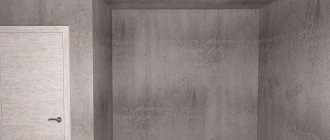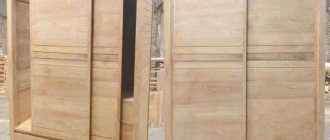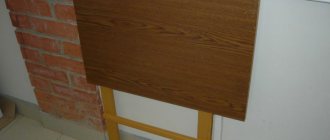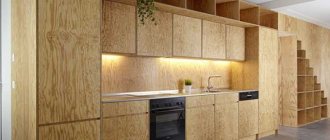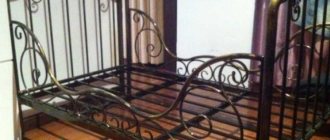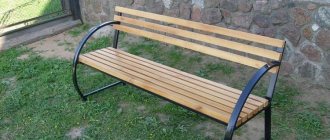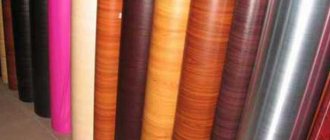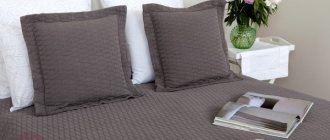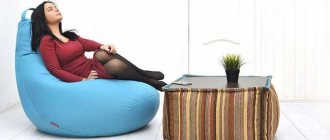Why gypsum
When choosing a stucco material, experts recommend gypsum, because unlike more modern synthetic materials (polyurethane, foam), gypsum decorative elements:
- durable
- if treated with care, they can last for many decades; - environmentally friendly
- do not emit harmful substances; - breathes
, absorbing excess moisture in the spring-autumn period, and releasing it in the winter, thereby improving the microclimate of the premises ; - fire resistant
- completely fireproof; - repairable
- in case of accidental damage, the defect can be easily corrected; - They can be easily repainted
, making it possible to change the color and stylistic design of interiors.
Plaster decorative elements
Gypsum decorative element
Of course, gypsum is not without some disadvantages:
- decor should not be used in a humid environment;
- heavy weight will require time-consuming installation;
- the cost of gypsum products is higher than synthetics.
These minor shortcomings are fully compensated by the advantages of the material.
Solution
Preparation of gypsum solution
For casting large gypsum products, the solution is prepared in small portions. The thick solution does not flow well and does not completely fill the mold, which has a thin relief.
An adhesive solution – gelatin or flesh solution – can slow down the hardening reaction. Recommended 25% con. It must be used within one day. In addition, the use of an adhesive solution gives the products strength.
Flat products are ground to a flat surface sprinkled with fine gypsum flour and left there for a day.
Assortment of decorative elements
Over the centuries-old history of using gypsum stucco, outstanding artists, architects, sculptors and decorators have created outstanding works in different styles, which are now being supplemented with new elements using 3D modeling. The most commonly used gypsum decorative elements are:
- columns, half-columns, pilasters
- for decorating walls, door and window openings, entrance arches; - pedestals
- as separate decorative elements, stands for sculpture, small plastic, the base of coffee, tea and coffee tables, especially with a glass top; - moldings, smooth and ornamented arches,
cutting - frames panels, individual mirrors or planar images, frescoes, divides walls into horizontal sections; - cornices
are the final part of the wall composition; LED lighting is often located behind them, creating soft, subdued lighting in the room; - capitals
- the completion of columns and pilasters, can be Doric, Tuscan, Ionic, Corinthian or composite, differ in different amounts of decor; - consoles
- supporting structures for the cornice protruding from the plane of the wall, can be used as a support for shelves with decorative trinkets, collections, books, especially effective in combination with glass; - friezes
- horizontal longitudinal compositions, consisting of alternating triglyphs with vertical ornaments and metopes with bas-relief compositions, occupy a place between the capital and pediment in classical architecture from Ancient Greece and Rome to the Empire style; - pediments
are luxurious triangular-shaped compositions that complete the order system, most often used on facades, in rooms they require significant height, on a reduced scale they can be used to accentuate the entrance or fireplace portal; - rosettes, medallions, panels, modulons, cartouches
are small decorative compositions of various shapes (circle, oval, square, rhombus, triangle), they accent door and window openings, decorate walls, made using the technique of bas-relief (with a protruding image) or high relief (image sinks); - panels
- ready-made compositions for wall decoration, often with mythological scenes, 3D panels create optical illusions, often used in modern pop art, high-tech, techno, postmodern design; - domes
- ceiling products of a round, oval or rectangular shape for mounting on the ceiling, often used for lamps or chandeliers of significant diameter, requiring a high floor height; - decorative brick
- gypsum tiles with a special protective coating, often used for facing kitchen aprons in various styles; - small plastic
- individual parts with which you can create garlands and compositions of individual design; - sculpture
- three-dimensional elements that require an all-round view, can be either individually made or a repetition of well-known works, life-size or reduced copies; - fireplace portals
- ready-made compositions of various styles and sizes for wood-burning fireboxes, bio- and false fireplaces, can be corner.
Decorative elements made of plaster
Of course, this list can be continued indefinitely, given the variety of styles that use plaster decor for the interior.
Plaster stucco molding from the CITY DECOR workshop
Gypsum stucco is currently considered one of the most popular ways to decorate the interior of any room, gaining increasing popularity both among owners of ordinary city apartments and private country mansions.
With its help, you can effortlessly create a luxurious and rich decoration of the room, which will favorably emphasize the high status and excellent taste of its owner in the eyes of every guest who comes to him. After all, use for many years has been considered a sign of luxury, financial well-being and a high sense of style. The City Decor stucco workshop offers everyone the production of gypsum stucco according to customer sketches of any level of complexity, and experienced specialists are always ready to carry out high-quality installation of gypsum stucco in any room.
Using ready-made stucco
Architectural styles from the archaic of Ancient Egypt, Greece and Rome to the Stalinist Empire style welcome the use of stucco. Only ethnic stylistics deny this decoration - Anglo-American country, Russian peasant style, ethno-African, Japanese, Southeast Asian.
When planning to decorate in a certain style, you should contact a professional - he will help you choose plaster decor for your home so that the composition looks harmonious.
For stucco, one of the important points is highlighting with color: white, ivory or cream looks great on a bright or dark background of the walls; if the background is light, it is advisable to highlight the gypsum decorative elements with bright paint, gilding, bronze, patination.
In modern interiors, plaster decor is most often used on the wall or ceiling. Vertical elements will make the room visually taller and more voluminous; ceiling decor, coupled with proper lighting, will also increase the height.
Plaster decor in a modern interior
Plaster decor in a modern interior
In classical styles and their modern interpretation (classicism, Renaissance, Baroque, Rococo), pilasters or half-columns accentuate the entrance, false fireplace, and bay windows, if available. Moldings and cornices of various profiles will help to divide the wall surface into separate tiers, the tiers into panels. Molding can serve as a frame for a beautiful mirror, an antique painting, or areas of a wall with another type of finish, such as Venetian plaster or a mosaic panel.
Ceiling decor in small rooms can be limited only to corner compositions, especially if LED lighting is installed behind the wall cornice. Plaster corners for the ceiling, matched in the same style with the decor of the walls, will create the appearance of a dome, thereby visually increasing the height of the room, and gypsum corners for the walls will smooth out the rigidity of right angles, adding softness to the interior.
Light cornice with LED lighting
Plaster corners for ceiling
At the junction of the floor and wall, use a plinth or replace it with molding of the appropriate height. You can use plinth or molding to frame window and door openings. Doorways are often finished off in the form of an arch with a decorative rosette, floral or ornamental garland.
Framing doorways with molding
In the eclectic style characteristic of Art Nouveau, Art Nouveau, postmodernism, and boho, there are no such clear rules for the use of decor and its belonging to one era. Here it is possible to have various elements related to the same theme in one room. However, it is precisely this circumstance that requires compliance with measure and scale - there should not be too much stucco molding, it should not be small, otherwise the effect will be the opposite: instead of visually expanding the space, we will end up with congestion, or worse, a cluttered room.
In current high-tech, techno, and minimalist styles, stucco molding in the form of 3D wall panels is welcomed, and the relief on them is created in such a way that it is quite possible to cover large surfaces with them without visible seams. Decorative elements made of plaster are painted in metallic colors - gold, silver, bronze, tin, which gives them even greater expressiveness.
Gypsum 3D panels in the interior
Gypsum 3D panels in the interior
It’s easy to order gypsum stucco molding according to your sketches!
The experience of the chief master in the production of gypsum stucco molding in our workshop has more than 25 years. He began his activities back in 1996, delighting his many customers to this day with products of the highest quality. We highly value the trust of each of our clients, guaranteeing such benefits from joint cooperation as:
- We use exceptionally high quality materials during our work, thanks to which we guarantee high reliability and durability of our products.
- All work is carried out by highly qualified craftsmen with serious experience working exclusively by hand, due to which the risk of defects is reduced to nothing.
- Minimum order completion times, without compromising the high quality of the work performed.
It is also worth noting the availability of delivery of finished stucco moldings using our workshop’s own transport throughout Moscow and Moscow Region. We will always be very glad to see each of you among our many clients!
Style and motive
Each interior solution has its own set of motifs; we will consider the possibilities of using an assortment of finished products.
Archaic and Antiquity
Ancient Egyptian builders were pioneers in the use of gypsum. This soft natural mineral was then used for carving interior decorations. The most common motifs are lotus, palm tree, images of the pantheon of gods. The Egyptians deified the surrounding nature, their gods were the combination of the human body with the head of a totem animal: falcon, cat, hippopotamus, jackal, crocodile.
In a modern interior it is difficult to use the barrel-shaped columns characteristic of the temples of Luxor, they require too much space, but you can choose a fireplace portal decorated with paired sculptural images of the pharaoh and his wife sitting on thrones, with a mantelpiece decorated with an ornament of buds and blossoming lotus flowers . Exactly the same motif can be repeated on the frieze surrounding the room. A separate figure of the sphinx can decorate consoles for shelves or serve as a decoration for a mantelpiece.
Ancient Greece and Rome learned to make castings from burnt gypsum powder mixed with water, making this type of decor cheaper and more accessible. Now all types of elements of order systems from the base to the pediment are cast from plaster. What decor to choose is a matter of preference for the owners: if desired, you can repeat the structures of the Athenian Acropolis, Roman Forums or the altar of Zeus in Pergamon in the decoration of the house.
Types of ancient orders:
- The Doric or Tuscan order is suitable for decorating a strictly owner’s office or a hunting hall: there is a minimum number of small details, the capital consists of two simple tori of different diameters, columns without fluted recesses or with minimal recesses, there are no intricate bas-reliefs on the frieze metopes.
- The Ionic order is considered softer and more feminine. The columns are slimmer, the capital in the form of two volute spirals is the distinctive sign of the order. Echin is decorated with ions. The frieze can be smooth, or, as in the Erechtheion, it can be completely decorated with bas-reliefs, without dividing into triglyphs and metopes.
- The capital of the Corinthian order is a combination of 12 volutes with echinus decoration with acanthus leaves and ionics, the column has an even more slender body without fluted decoration, the frieze is completely filled with bas-reliefs.
- Like the Tuscan, the composite order was created in Ancient Rome, its capital is an even more decorated version of the combination of the Ionic and Corinthian orders, the body of the column is decorated with flutes.
Types of ancient orders
Gothic
Gothic decor is replete with a combination of biblical scenes with “devilish” creatures - various kinds of unicorns, dragons, chimeras, gargoyles, symbolizing the struggle between good and evil, the light of faith and the darkness of prejudice. Favorite motifs of ornaments - rose, lily, bas-reliefs - Temptation, Expulsion from Paradise, Annunciation, Christmas, Flight into Egypt, Madonna and Child. Lancet arches, flower and grape garlands, rosettes and stained glass rosettes are signs of the Gothic style in the interior.
Modern interior in Gothic style
Modern interior in Gothic style
Romanesque architecture
The Romanesque style in architecture relates more to defensive structures: influential barons were concerned with maintaining privileges and protecting their possessions, paying less attention to the decor of the castle chambers. The influence of the church was undivided; biblical scenes dominated the decor. The style is characterized by semicircular arches, sculptural capitals on powerful columns, and stained glass windows of amazing fineness. The walls were most often decorated with fabrics or tapestries; plaster stucco was present minimally.
Modern interior in romantic style
Modern interior in romantic style
From Renaissance to Rococo
Renaissance, Baroque and Rococo are three styles that made stucco the queen of interiors. A return to the traditions of Antiquity, greater freedom from church ties, made it possible to create outstanding palace interiors. The church remains the main customer for artists, but the subjects of the images are no longer limited only to biblical and evangelical subjects - even in the interiors of the Vatican you can see repetitions of ancient masterpieces, a pantheon of gods, heroes, fairy-tale and literary characters: Antaeus, Cupid and Psyche, the court of Paris, Hercules and his exploits, Pan, Centaurs, nymphs and dryads, Daphnis and Chloe. For Rococo, pastorals became especially favorite - an idealized rural life with sheep, dancing and frivolous scenes.
Modern interior in baroque style
Modern interior in Renaissance style
Modern interior in Rococo style
Classicism and Empire style
Classicism and the Empire style that followed it brought austerity and military themes to the interiors: the period from the Great French Revolution of 1793 to the mid-19th century - the time of the Napoleonic wars and subsequent revolutions in Europe. In addition to the ancient and biblical motifs that have become familiar, weapons, banners, wreaths, and horsemen appear in the decor; it becomes less fractional and at the same time elegant.
Modern interior in Empire style
Modern interior in classicism style
Modern
Art Nouveau of the Austrian Empire and France, Art Nouveau in Germany and Art Nouveau in Russia is a new informal style that replaced the ranked Empire style. Instead of orderly symmetry, asymmetrical compositions are used, fluidity of forms, decor of different styles is mixed, forming a new cozy space. Stucco is used widely, often painted in dark colors. The ornaments are decorated with floral motifs and fairy-tale characters.
Stucco molding always contrasts with the general background of the walls: white or pastel colors on bright ones, bright, gilded or painted in dark colors on light ones. Patination and other specific types of finishing give Art Nouveau interiors a particularly festive mood.
Modern interior in Art Nouveau style
21st century design
In the interior design of the 21st century, its own style has not yet been developed; slightly modified forms and decorations of predecessor styles in an eclectic mixture are relevant. Innovations in technology make it possible to create stucco moldings from gypsum with less weight; paint and varnish materials give the surfaces the appearance of metal, natural stone or wood. In loft, high-tech, techno or minimalist interiors, simple profiles of moldings, baseboards, arches are combined with 3D panels, casts from antique sculpture, brackets in the form of atlases or caryatids. You just need to remember that it is easier to follow a certain direction, while eclecticism requires a professional level of design.
Eclecticism
Manufacturing of piece stucco molding
You can order gypsum stucco from specialists, buy it at a hardware store, or make it yourself. The decor of this plan can be carved or cast. Cutting on a gypsum base requires special, artistic skill.
But the injection molding method is available to everyone. You don't need to be a great specialist to do this. The most difficult thing in this matter is to select or make forms.
Do-it-yourself gypsum stucco molding at home is made in factory-made molds from silicone, latex, and metal. But for small parts, you can make the equipment yourself from molding plasticine, and for a sample you can buy a ready-made plaster rosette or medallion.
- The main material used is ordinary building gypsum grade G10. It is diluted with water and stirred in any convenient way. A small amount of solution can be made with a trowel or spatula; a large volume can be prepared using a mixer or drill with an attachment. To improve ductility and reduce the risk of cracking of the product, PVA glue, lime or another plasticizer is added to the composition. The solution should have the consistency of thick sour cream.
- The mold must be cleaned and the inner surface thoroughly coated with silicone grease so that the product, after hardening, does not stick to the tooling and easily comes out of it without damage. It is not recommended to use film or foil; in this case, the relief pattern on plaster stucco may turn out blurry.
- Now you can pour the prepared mixture. Shake the mold to compact the mixture and level the back side.
Drying will take approximately 1-5 hours, depending on the thickness of the part. After this, the product is released from the mold and left for a day for aging and final hardening. Then the product must be sanded and varnished or painted, if this needs to be done in advance.
You can make the mold yourself from plasticine. To do this, they usually use a ready-made molded part. It is simply pressed into the plasticine mass, obtaining a relief imprint. It is subsequently lubricated with silicone grease and then the steps described above are repeated. Any of these methods is used to make decorative stucco, which is then attached to walls, ceilings or other surfaces.
Sometimes, to create decor of an unusual shape, they do without molds. A flat base (maybe a table) is greased with silicone and a rope soaked in a plaster solution is placed on it in a certain order. To create several identical products, the drawing must first be made on paper. Then you can lay out the rope as it should. The structure is then filled with mortar and left to dry. The finished product is carefully removed from the table, brought to condition and is suitable for fastening in place.
Technique for creating stucco molding
Drawing a sketch
Regardless of whether you have the skills to make stucco molding or not, at the first stage you should draw a clear sketch of the future product. The sketch should indicate the size and design of the device.
Inspiration can be drawn from the World Wide Web, literature, and design magazines. Some find what they have been looking for for a long time in history books, which contain colorful pictures of ancient palaces. Avoid bulky structures that stand out from the overall style of the interior. Beware of overlapping seats.
The completed sketch must be printed on a printer in natural size and a model of the future decorative part must be made slightly larger than what is included in the element itself. Use plasticine or clay in your work.
If you think that you do not have sufficient knowledge, do not have an artistic education and, in the end, you are not up to it, a polyurethane-based product sold in construction stores can act as a model.
Thus, using just one copy, you can make many gypsum structures. It is also convenient that the polyurethane device can be easily changed by cutting off the excess or, conversely, adding the missing parts using plasticine.
Creating a form
Finally, the model is ready, now proceed to create a mold for casting the desired stucco. Silicone is easier to work with, although it is more expensive. Apply a generous amount of release agent to the model, which will then allow the mold to come off easily.
Mix silicone and silicone oil - these actions will increase the elasticity of the mass. Cover the model with silicone so that no gaps are formed, cover the recesses and pores.
Please note that the strokes should be smooth and gentle, which will help avoid the appearance of air bubbles. The remaining bubbles form depressions that spoil the appearance of the entire product.
After applying the first layer of silicone, cover the mold tightly with gauze, but do not pinch the product.
Ideally, the device should be coated with three layers of silicone; the previous one should dry thoroughly before applying each subsequent layer. The area where a larger amount of gypsum will be fixed is recommended for additional processing. If it is inconvenient to work with a brush, use a “gun”.
For large, voluminous parts, a plaster frame is constructed that will hold its shape and prevent it from “walking.” Make a frame from wooden slats or plywood that matches the size of the shape, you can choose boxes. Then add water, gypsum and cement to the PVA glue for rigidity. Pour the resulting solution into the formwork, do not forget to level the surface and set aside until completely hardened. The finished form is easy to remove from the model.
Making stucco
We begin to “prepare” the plaster. Remember that this material hardens very quickly - 2-3 minutes are enough for the product to lose its fluidity, and 7-8 minutes for the plasticity to disappear. Do not use hot water; cold water will prolong the liquid consistency of the mass.
Next, take 10 parts of the dry mixture, gradually add 7 equal parts of liquid, mix thoroughly and quickly, ideally use a drill with a special tip. Add a little PVA glue, pre-soaked in water. You will immediately notice how the mixture has become more plastic, which will subsequently prevent the device from cracking. Strive to ensure that the homogeneous structure of the solution is close to liquid sour cream.
Coat the inner surface of the blank mold with lubricant and fill the sample with liquid gypsum, ensuring that the material is evenly covered. Run a wide spatula over the surface and set aside to dry completely, 15-20 minutes.
After this, remove the stucco molding and dry the device further by laying it out separately on a flat surface. There is no need to try to speed up the process by artificially heating the plaster, this will only ruin the workpiece.
Stucco molding in the interior of an apartment in the kitchen
Stucco molding in the kitchen
The kitchen-dining room is the very room where you can give free rein to your imagination. Absolutely any style will look good in the kitchen. Now they are actively adding stucco to the interior, which is not working. It imitates 3D effects or as a variant of a column of unusual shapes and sizes.
A long-known technique is a panel where a variety of patterns are combined to dilute the plain walls.
But the classics of the kitchen interior are considered to be moldings, rosettes, pseudo-stone masonry on the walls, borders, as well as panels with chic decor in the Baroque style.
You should entrust the choice of stucco molding to a professional designer; this is a very basic decorative element that can both reduce the cost and give the interior a rich shine. Naturally, you should express your wishes, but you should listen to the opinion of a professional. Plus, not everyone will decide on the futuristic use of stucco that may be intended, because it will quickly become boring to the eye.
And don’t forget that the kitchen should be functional, and then beautiful. So let practicality come first. Stucco molding can also be made less noticeable, for example, you can decorate the hood grilles with it or put a border along the ceiling behind the curtain rods. Or just frame the sockets. But the main thing is that the material is easy to clean.
The best material for this is considered to be polyurethane - it is waterproof and quite rigid. No painting required. Stucco molding is a good way to hide uneven walls or imperfect repairs behind moldings. And if your room lacks brightness, then this decor will definitely suit you.
